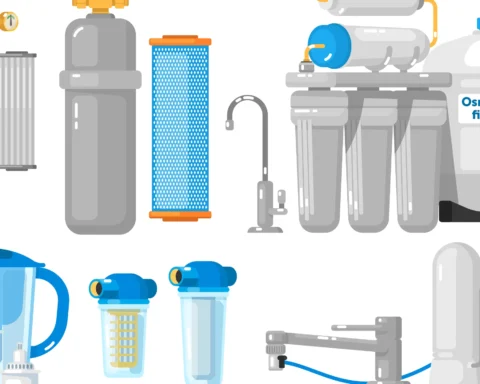Post Preview
Table of Contents
- Introduction to Data Storage
- Myth 1: SSD Drives Are Too Expensive
- Myth 2: All SSDs Are Equal
- Myth 3: SSDs Are Not Reliable
- Myth 4: HDDs Are More Durable
- Understanding DWPD
- Real-World Examples of Storage Use Cases
- The Future of Data Storage
Introduction to Data Storage
Data storage technologies have evolved rapidly, offering businesses myriad options, from traditional Hard Disk Drives (HDDs) to state-of-the-art Solid State Drives (SSDs). Despite these advancements, the market is rife with misconceptions and myths that often lead to poor decision-making. For instance, understanding DWPD (Drive Writes Per Day) metrics is crucial for evaluating SSD durability and performance. DWPD calculates how many times the SSD’s total capacity can be overwritten daily during its warranty period without fail. Higher DWPD values indicate more durable drives. Modern SSD technology offers significant advantages in speed, reliability, and longevity. However, misconceptions persist, which can skew perceptions and lead to suboptimal choices. By debunking these myths, businesses and individuals can make more informed, effective decisions about their data storage solutions, ultimately benefiting from the technological advancements in this field.
Myth 1: SSD Drives Are Too Expensive
There’s a widespread belief that SSD drives are relatively inexpensive and not worth the investment for average users. While it is true that SSDs were initially priced higher compared to HDDs, the cost disparity has significantly reduced over the years. SSD prices are on a downward trend, making them increasingly affordable for many consumers. Today, the price gap between SSDs and HDDs is narrowing, offering excellent value for the performance benefits SSDs bring. Their speed, durability, and efficiency make them a worthwhile investment, particularly for data-intensive tasks. For example, businesses dealing with large databases or multimedia content can experience significant performance improvements with SSDs. Moreover, SSDs’ lower energy consumption than HDDs can result in long-term cost savings on power bills, further offsetting the initial investment.
Myth 2: All SSDs Are Equal
Another common myth is that all SSDs offer the same level of performance and reliability. SSDs come in various types, such as SATA, NVMe, and enterprise-grade models, each offering different speeds, durability, and costs. For instance, NVMe SSDs provide faster data transfer speeds than their SATA counterparts, making them suitable for high-performance computing environments requiring rapid data access and processing. Selecting the correct type of SSD depends on specific needs and workloads. For example, businesses requiring quick data access and efficient performance would benefit more from NVMe drives. At the same time, individual users might find SATA SSDs sufficient for everyday tasks like web browsing and document editing. Additionally, enterprise-grade SSDs are designed to handle large volumes of data with high reliability and longevity, making them ideal for data centers and mission-critical applications.
Myth 3: SSDs Are Not Reliable
Another myth about SSDs’ perceived lack of reliability needs debunking. Unlike HDDs, which have moving parts and are prone to mechanical failures, SSDs have no moving components, reducing the risk of physical damage. Studies and real-world usage data have demonstrated that modern SSDs boast excellent reliability and longevity. Many SSDs come with advanced error-correcting code (ECC) algorithms that help prevent data corruption, further enhancing reliability. SSDs also perform better in environments challenging for HDDs, such as those with varying temperatures and mechanical shocks. Their robustness makes them suitable for both consumer and industrial applications. Furthermore, the advent of technologies such as wear-leveling and over-provisioning in SSDs helps to distribute data more evenly across the storage cells, prolonging the lifespan of the drives.
Myth 4: HDDs Are More Durable
The notion that HDDs are more durable than SSDs is a lingering misconception. Due to various moving components like spinning disks and read/write heads, HDDs are more prone to damage, especially in areas with physical impacts. Conversely, SSDs’ lack of moving parts enhances their durability and resilience, making them less prone to mechanical failures. In many cases, SSDs outlast HDDs, particularly in conditions where stability and endurance are critical. This durability makes SSDs an attractive choice for long-term data storage solutions where reliability is paramount. Additionally, SSDs’ silent operation, compared to the audible spinning and clicking of HDDs, is another advantage that can contribute to a quieter working environment.
Understanding DWPD
Drive Writes Per Day (DWPD) is crucial for assessing SSD durability. It measures the number of times you can overwrite the entire capacity of an SSD each day over its warranty period without failure. Understanding DWPD helps select SSDs that meet specific durability requirements, particularly in enterprise environments with high data storage demands. For example, a DWPD rating of 3 means that you can write three times the total capacity of the SSD every day over its warranty period without experiencing failures. Higher DWPD values indicate more durable drives, making it essential for enterprises whose operations depend heavily on reliable data storage solutions. By evaluating DWPD, one can better align their storage needs with the right type of SSD, ensuring both longevity and performance. For instance, an organization running critical applications with high write volumes may require drives with higher DWPD ratings to avoid frequent replacements and downtime.
Real-World Examples of Storage Use Cases
Organizations across various sectors are increasingly adopting SSDs for speed, reliability, and efficiency. For instance, companies involved in video production, database management, and artificial intelligence training rely on the high performance and robustness of high-quality SSDs to manage their data-intensive tasks effectively. SSDs enable faster rendering and real-time editing in video production, while databases provide quicker query responses and better overall performance. In addition to businesses, individual users also benefit from SSDs’ quick boot times and fast data access, enhancing overall productivity and user experience. The transition to SSDs is not just about speed but also about improving workflow efficiency across the board. For instance, gamers enjoy reduced loading times and smoother gameplay, while professionals working with large files experience less lag and faster file transfers.
The Future of Data Storage
The future of data storage is promising, with ongoing innovations in SSD technology that aim to increase storage capacities further, improve speeds, and reduce costs. As the technology progresses, the myths surrounding SSDs will continue to be debunked, allowing for more informed and optimized data storage decisions. Developments such as 3D NAND technology and improved controller designs are expected to drive these advancements, offering even greater efficiencies. Looking ahead, businesses and individuals alike will benefit from embracing these advancements, ensuring their data storage solutions are both cutting-edge and practical. Understanding the realities behind data storage technologies enables better preparation for the future, where data management remains a pivotal aspect of operational efficiency. As the adoption of SSDs continues to rise, it is crucial to stay informed about the latest trends and innovations to leverage the best possible solutions for data storage needs.
Stay in touch to get more news & updates on Essential Tribune.Com!








